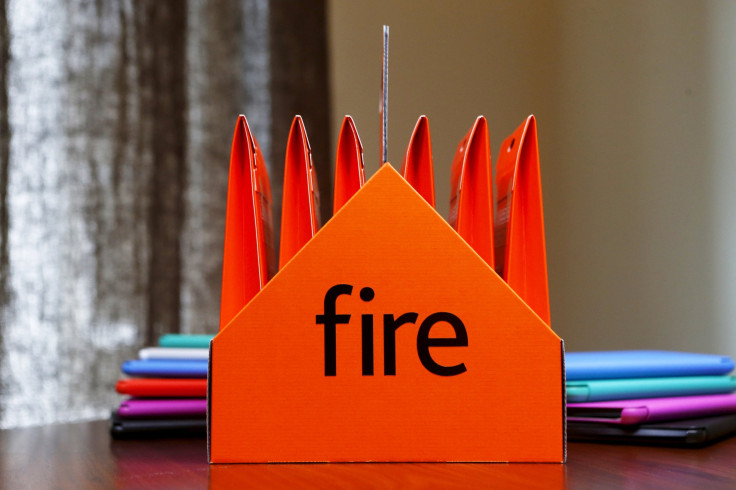Amazon $50 Fire Tablet Sees Shipping Delays As Demand Soars For Budget Alternative To Apple Inc.’s iPad

LONDON – Amazon’s new $50 Fire tablet, which the company bills as a “premium product at a non-premium price,” is so hot that the online retail giant is warning consumers looking to snap one up that the device may see extensive shipping delays. “I can tell you, we are only two weeks into this, so it’s super early, but the response has been over the moon,” David Limp, Amazon’s senior VP for devices, told executives and analysts at an event here this week.
Amazon said it is already struggling to cope with the higher-than-expected demand, and as the tablet began shipping Wednesday, delivery times have stretched out to three weeks and are likely to get longer in the short term.
So why is Amazon’s budget tablet so popular? The question may seem unnecessary given its price tag, but there are many other tablets available for under $50 that won't sell nearly as well. For starters, the tablet can be purchased individually or in “six packs” in which the sixth one is free.
The other reasons, according to Limp, are twofold.

The first is that the Fire tablet has features you just don’t get on other similarly priced devices. “This tablet doesn’t have any compromises you see in other sub-$50 tablets out there today,” Limp said. Indeed, Amazon can build a $50 tablet with such relatively high specs because unlike its rivals, including Apple and its iPad, it’s not counting on hardware to provide significant profits. “Amazon’s devices are not just gadgets, but are portals to the company’s online stores. We want to give premium products at non-premium prices,” Limp said.
Like Amazon’s approach to all its devices -- including the Kindle and Fire TV -- the Fire tablet will be sold at close to cost. Amazon will be looking to make its money from selling content through its online book, film and music stores. The company “is highlighting the quality of the products, even differentiating this entry product against much higher-priced competition, to grow its Prime subscriber base,” John Devlin, an analyst with Futuresource Consulting, told International Business Times. Devlin was referring to Amazon’s Prime membership service, which offers free delivery and streaming content for $99 per year.
The second reason for the apparent success of the tablet is down to branding, and by getting there first, Amazon is changing the way people view and use tablets.
“Once you break the sub-$50 barrier with a branded, high-quality tablet, people are going to use tablets for entirely new and different things," said Limp, who spoke at an event organized by MediaTek, the Taiwanese chipmaker that provides the processors powering Amazon’s latest tablets. "You will give them to your kids. You might use it on your bedside table as an alarm clock. You might put it in the back of your car as an in-car entertainment system."
Devlin concurs that Amazon’s branding is key to the success of tablets at this price: “The Amazon brand is very strong and combined with its reach and distribution capabilities this enables it to position its products at a very attractive price point.” Devlin said the low price puts this in the “impulse buy” category, making it an attractive proposition for first-time buyers who just want to test the water.
All this comes as the broader tablet market is slowing. Following an explosion in growth, there has been an equally fast cooling off in sales from almost all manufacturers -- even sales of Apple’s iPad have stuttered in recent quarters.
According to IDC, the tablet market declined 7 percent year-on-year in the second quarter of 2015 due to "little hardware innovation and limited vendor portfolio updates." Gartner is predicting an overall decline in tablet shipments for 2015.
© Copyright IBTimes 2025. All rights reserved.




















